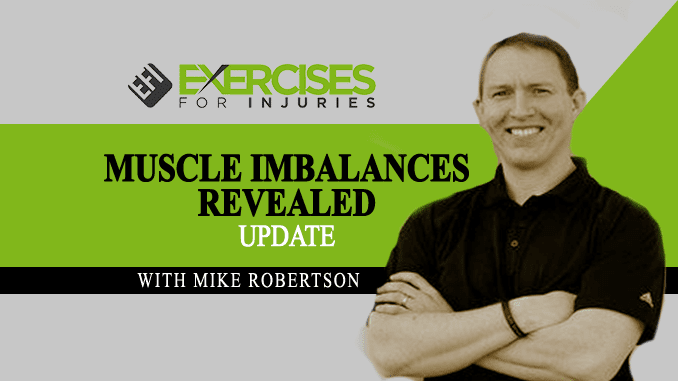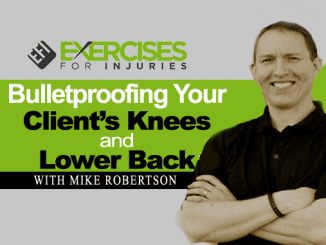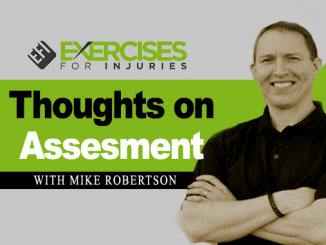
Muscle imbalances are a common issue with trainers and trainees. If someone trains regularly, they will eventually develop an imbalance in their muscles—big or small. Imbalanced muscles can lead to various complications, ranging from pain to injury. The reality is that we’re all susceptible to developing muscle imbalances because the human body constantly adapts to the stress we place on it through exercise. In this blog, I will share with you about (MIR) Muscle Imbalances Revealed program Update from Mike Robertson.
I just finished up an interview with Mike Robertson. Mike did a presentation for MIR ( Muscle Imbalances Revealed ) program:
Component #1 – Muscular Imbalances in the Hip & Pelvis
I wanted to talk with Mike and see what was new, what he had to add to his video presentation, and answer questions he got about his presentation.
In the interview Mike Shares with You:
- Updates to his presentation
- #1 Mistake that fitness professionals make
- The best approach to targeting the hip
- How do you prioritize muscle imbalances you find in your assessment
- What muscles do you target first in the hip
- The first step to addressing a muscle imbalance in the hip
- How do you address muscle imbalances with an athlete that is in season
- Core Stability versus Core Strength Training
Mike will talk more about muscle groups in his upcoming Vancouver seminar. The increased interest in the subject has made it more worthwhile to study people anatomically. Knowing how anatomy works and how our body structure influences function is only possible if we recognize what muscles are used to train and where the most significant gains can be made.
This is where you can determine where to begin and whether the patient is rotating his hips or performing glute med exercises properly. According to Mike, the individual’s total evaluation will reveal whether you have muscle imbalances if you perform squats, lunges, or push-ups. Once you recognize these difficulties, you may begin to program in those areas that need the most attention.
Isolation Training
After the assessment, the best way to train is to do muscle isolation. Mike makes this a practice in their facility, where they use specific equipment to work on isolating some minor stabilizing muscle groups. This is to bring those muscles up to an appropriate level of function and strength so you can start rebuilding those motor programs.
Mike revealed that he usually does the isolation training with injured athletes during their playoff season. The ratio is 50/50 – half of his time focused on conditioning, and the other half focuses more on sports-specific to prepare them to go back to a high level.
Mike said his patients are usually confused about the distinction between core stability focus training and core strength. The critical thing to remember when talking about ‘core’ stability is that it refers to the pelvis—spinal alignment or how we keep our back in good alignment. Our rib cage muscles produce force or movement to transfer motion throughout the body, referred to as core strength.
Component #1 – Muscular Imbalances in the Hip & Pelvis
Here is a clip from his presentation:
How to hear the interview:
- Log in to Muscle Imbalance Revealed.
- Go to http://muscleimbalancesrevealed.com/login
- Enter your username and password.
- Then go to: http://muscleimbalancesrevealed.com/update-interview-with-mike-robertson/.
If you have not got (MIR) Muscle Imbalances Revealed yet, CLICK HERE to get it.
Rick Kaselj, MS





